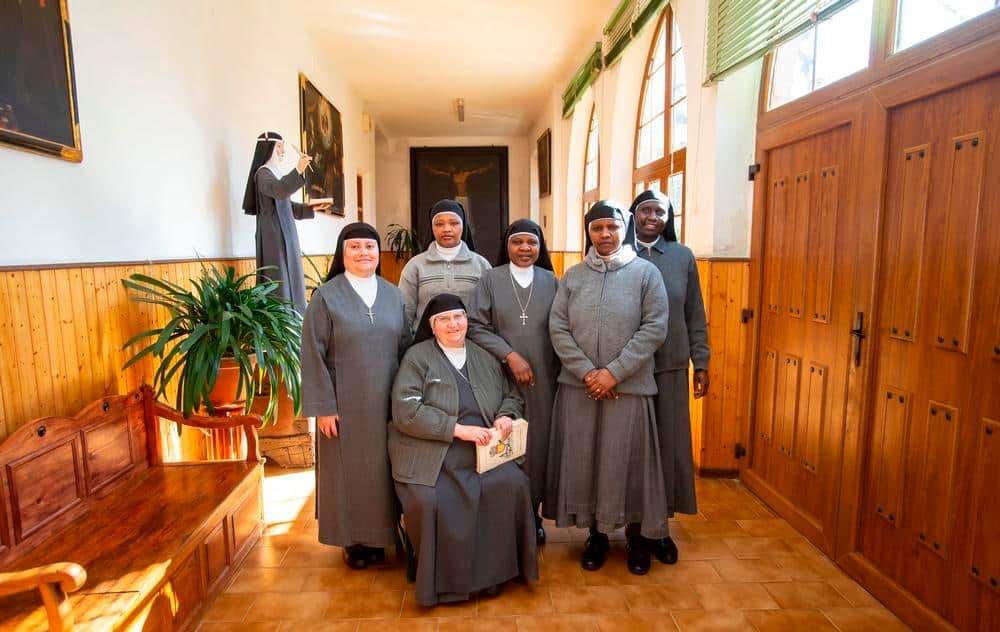According to tradition, in 1346 Saint Brigid received the inspiration to found a new religious Order.
During that year the Holy Rule (Regula Salvatoris) was revealed to her, which was to govern life in the monastery and which had the particularity of being mixed: Saint Brigid was the first founder of a mixed monastic order, that is, made up of men and women. who lived in the same monastery with their respective cloisters.
The first of these “double monasteries” was Vadstena which is the Mother House and Protomonastery of the Order of the Most Holy Savior.
The place designated for the foundation was a royal castle donated for this purpose by the King of Sweden Magnus Eriksson II.
In 1367, Saint Bridget (who had resided in Rome since the autumn of 1349) obtained Urban V’s approval for the foundation of the monastery.
In 1370 the same Pope, with the Bull Hiis quae divini, let three Swedish bishops know that he granted permission for the foundation in Vadstena of two independent monasteries of nuns and friars under the Rule of Saint Augustine, complemented by the text of the Regula Salvatoris. .
As a result of the pontifical blessing, between 1369 and 1374 work began on the construction of the monastery in Vadstena, but Saint Brigid died in Rome on July 23, 1373, without being able to see the foundation of the monastery or being able to enter the new Order.
It is then that her daughter, Saint Catherine of Sweden, takes the reins of the project. She returned to Sweden with the mortal remains of her mother in the winter of 1374-1375, and when she arrived in Vadstena she met a few novices whose superior was an Augustinian, and she managed to gather a few women interested in the project and in 1375 she was elected abbess. .
In 1377 Gregory XI allowed the first professions of nuns and monks. Urban VI, with the Bull Hiis quae pro divini (December 3, 1378), confirms for the Abbey of Vadstena the profession of the Rule of Saint Augustine, complemented by a reworked text of the Regula Salvatoris.
The order of the Holy Savior in Spain: The Brigidine collection
Saint Brigid and her husband Ulf made a pilgrimage on foot to Santiago de Compostela on a journey that lasted two years between 1341 and 1343, but it was not until the 16th century that the first monastery of the Order of the Most Holy Savior was founded, probably because it seemed impossible the founding of a “double monastery” in the Spanish spiritual and religious context of the time.
It was the Venerable Marina de Escobar (1554-1633) who received the inspiration to establish the Order of the Holy Savior in Spain on her chronically ill bed. She obtained the license to do so and obtained confirmation of the Constitutions from Urban VIII in 1628. However, she died in 1633 without seeing the project started.
It was then that the Servant of God Mother Mariana of Saint Joseph (1568-1638), founder of the Augustinian Recollects, close friend and relative of the Venerable Marina, felt obliged to carry out the unfinished business. Thus, with four Augustinian Recollect nuns, led by Mother Agnes of the Assumption, the first monastery of the Order of the Holy Savior was founded in Valladolid in 1637.
The Venerable Marina de Escobar modified some chapters of the Regula Salvatoris of Santa Brígida to adapt the foundation to the Spanish context; she emphasized the life of prayer, recollection, penance and austerity in the spirit of the Recollection movement, calling herself the Order of Recollect Nuns of the Holy Savior or Recollect Brigids.
This new Recollect branch was established exclusively for women, so it did not follow the Order’s tradition from its origins of erecting double monasteries.
The Brigidine Recollection founded 5 monasteries in Spain: Valladolid (1637), Vitoria (1653 – closed in 2007), Lasarte (1671), Paredes de Nava (1671) and Azkoitia (1691). The monastery of Valladolid was founded in Mexico City (1743), and in this country three other monasteries were founded: Puebla de los Angeles (1907), Tecate (1975) and Tijuana (1988). From Mexico, a monastery was also founded in Venezuela, in Ordaz Port (1999), and in Colombia, in Caldas (2017).
Lifestyle
The Brigid nuns constitute the authentic and true heart of the Order of the Most Holy Savior, since they continue to perpetuate and embody the charisma and spirit that the Lord raised in Saint Brigid: the strictly contemplative life in the cloister.
The Brigid nuns offer their lives to the Savior in true humility, pure chastity and voluntary poverty. Meditation on the Passion of Jesus and filial devotion and imitation of the Blessed Virgin Mary constitute the pillars on which the life of the nun Brigida is based. The praises of the Savior (solemn Divine Office) and the Mother of God are the main task to which they give their lives in cloistered recollection. But when they are not busy in sacred offices or in spiritual study or reading, they must work with their hands to support themselves and cover the expenses of the community.
Silence must reign in the monastery, reserving two times of joyful recreation after lunch and after dinner. The fasts, mortifications and penances, as ordered by Holy Mother Church, however, must be carried out with wisdom, prudence and moderation, so that the body is always ready to attend to the corporal offices with fervor and can live among the works of the body monastery with healthy joy. With the permission of the Mother Abbess, each nun has what is necessary for her personal use, with simplicity of spirit, mortification and austerity.









